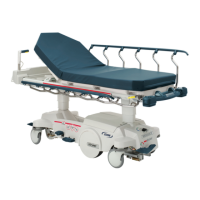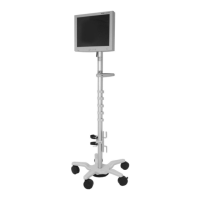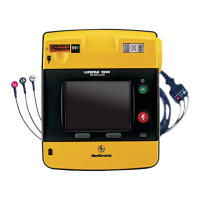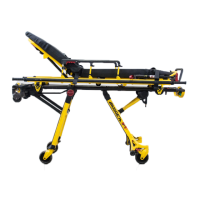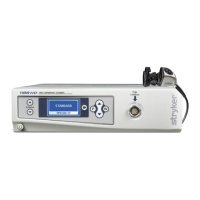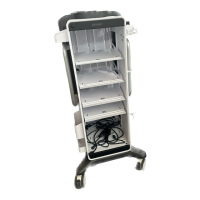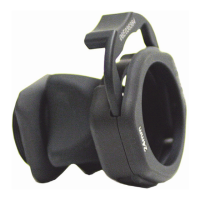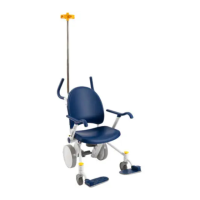Safety Tips and Guidelines
5
Before operating this stretcher, it is important to read and understand all information in this manual. Carefully
read and strictly follow the warnings listed on this page.
WARNING
Always apply the caster brakes when a patient is getting on or off the stretcher. Push on the stretcher to en-
sure the brakes are securely locked. Always engage the brakes unless the stretcher is being moved. Injury
could result if the stretcher moves while a patient is getting on or off the stretcher.
Be sure the siderail latching mechanism is working properly at all times. If it is not, refer to your stretcher
maintenance manual for ”Siderail Latch Adjustment”.
When using the transfer board to transfer a patient, always lock the brakes on all stretchers, beds, etc. being
used and always be certain the transfer board is placed securely on the surface of the mating stretcher or
bed. The patient stretcher and the mating surface must be at the same height before the patient is transferred.
CAUTION
To avoid damage, remove any equipment that may be in the way before raising or lowering the litter height.
When lowering the siderail to the collapsed position, keep extremities of patients and staff away from the side-
rail spindles or injury could occur.
To avoid injury or damage to the equipment, do not allow the siderail to lower on its own.
When the transfer board is being used to transfer a patient, the support post (D) must be in the stored (down)
position. Damage to the support post will occur if it is pushed up against a stretcher, table, etc.
The push handles were designed for use while transporting the stretcher. Avoid using other parts of the
stretcher as push/pull devices because damage could occur.
If the pneumatic system is difficult to operate, refer to your Stretcher Maintenance Manual for ”Pneumatic
Fowler Adjustment”.
Keep hands/fingers clear of area between spine tubes and Fowler when lowering. Injury could result.
To avoid damage, the weight of the IV bags should not exceed 40 pounds.
To avoid damage while transporting the stretcher, verify the IV pole is at a low enough height to allow it to
safely pass through door openings and under light fixtures.
If the stretcher is equipped with the optional foot end IV pole, the IV pole must be in the raised position when
the foot extension/defibrillator tray is installed. If the IV pole is not raised, the foot extension will not function
properly and injury could occur.
If the stretcher is equipped with the optional foot end push handles, use caution while the foot extension/defi-
brillator tray is installed to avoid pinching your fingers.
To avoid damage do not put items weighing more than 30 pounds on the defibrillator tray or on the serving
tray.
The unit cannot be raised (hydraulics on base) with a patient lift under the stretcher.
The hood may not be used for stepping.
Note
Clean hood storage area regularly.
The bottom of the brake rings should be cleaned regularly to prevent wax and/or floor remnant buildup.
Return to Table of Contents

